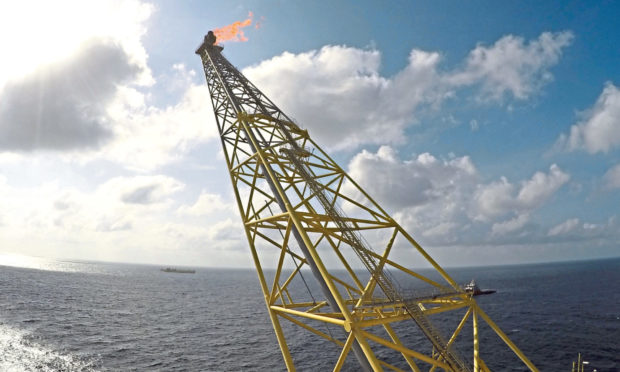The North Sea Transition Deal sets an ambitious course to meet the government target of net-zero carbon emissions by the middle of this century.
It involves an investment of £16 billion by 2030, and the agreement between the UK Government and Britain’s oil and gas industry is the first of its kind by any G7 country.
It has been described as “an example of how oil and gas-producing countries can move fairly towards a lower-carbon future in a way which supports the economy, jobs, and energy communities”.
The deal is expected to help support the creation of up to 40,000 new energy jobs in industrial heartlands across the UK.
It also aims to ensure energy communities like Aberdeen and Teesside can successfully transition, retaining jobs and skills, and creating a more diverse and inclusive workforce.
Scotland Office Minister David Duguid said: “The north-east has long been seen as a centre of excellence in the oil and gas industry – there’s no reason why it can’t now be seen as a global centre of excellence for energy transition.
“This is not just about making the transition from hydrocarbons to renewables. It’s about a transition of jobs, skills and expertise as well.”
But industry observers say meeting the aims and commitments of the deal will be no easy task.
Commitments
The agreement developed in partnership with sector body OGUK outlines more than 50 government and industry actions to accelerate moves towards net-zero emissions by 2050.
Key commitments include:
- The sector setting early targets to reduce emissions by 10% by 2025, 25% by 2027 and 50% by 2030.
- Joint government and sector investment of up to £16bn by 2030 to reduce carbon emissions. This includes up to £3bn to replace fossil fuel-based power supplies on oil and gas platforms with renewable energy, up to £3bn for carbon capture utlisation and storage (CCUS), and up to £10bn for hydrogen production.
- By 2030 the sector will voluntarily commit to ensuring 50% of its offshore decommissioning and new energy technology projects will be provided by local businesses – helping to anchor jobs in the UK.
- The appointment of an industry supply chain champion who will support the co-ordination of local growth and job opportunities with other sectors, such as CCUS and offshore wind.
“This is not just about making the transition from hydrocarbons to renewables. It’s about a transition of jobs, skills and expertise as well.”
David Duguid, Scotland Office minister
OGUK chief executive Deirdre Michie said: “The deal will unlock billions of pounds of investment and see government and industry work together to deliver a home-grown energy transition, realising innovative low-carbon solutions that can be exported globally.”
Business and Energy Secretary Kwasi Kwarteng said a clear message had been sent around the world that the UK will be a nation of clean energy as the country builds back better and greener from the pandemic.
Oil and Gas Authority chief executive Andy Samuel said the deal marked an exciting new chapter for the North Sea, confirming energy transition in action.
Mr Samuel added: “As long as oil and gas remain part of the UK’s energy mix, they must be produced more cleanly and in line with net-zero.
“Our studies show how the UK continental shelf (UKCS) can provide 60% of the UK’s overall carbon-reduction requirements to meet net-zero 2050, through electrification, carbon capture and storage, hydrogen and offshore wind.”
However, environmental campaigners are unhappy that the government has decided not to ban future offshore licensing rounds for oil and gas exploration.
‘Colossal failure’
Mel Evans, head of Greenpeace UK’s oil campaign, said: “Refusal to rule out new oil and gas licences when the evidence is already clear they are incompatible with UK climate commitments is a colossal failure in climate leadership in the year of the United Nations Climate Change Conference.”
In January, research and consultancy group Wood Mackenzie asked whether net-zero oil and gas production was possible in the UK North Sea.
Malcolm Forbes-Cable, vice-president upstream consulting and supply chain lead at the firm, said: “Sustained effort is needed to meet decarbonisation targets.
“The implementation of revolutionary solutions has been hampered by the overall maturity of the basin and limited availability of capital due to low oil prices.
“Some solutions may have to be set aside due to high technology hurdles, while others will need government support or industry collaboration.
“Focused, strategic investment will be vital to ensure the oil and gas industry plays its role in the evolution of a decarbonised, integrated energy system on the UKCS.”











